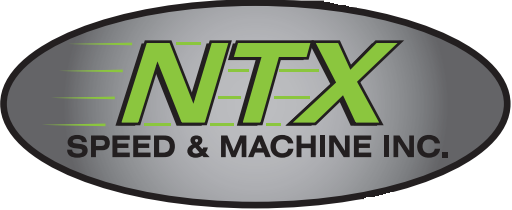I remember the advent of Synthetic oils back in the late 80's and 90's and they were labeled the best thing for engines Period.
Synthetics have come a long way and have made their way into almost every automobile manufacturer's line-up. With partial synthetics in Ford's first version of 5W20 to fully synthetic Mobile in every Corvette made. Needless to say they have great benefits over conventional. Higher temperature capacities, lower viscosities without reduced film strength, and better thermal stability to name a few.
But, there is one item of contention "Break in". Should an engine go through its break-in on synthetic oils?
Lets first think about what "Break in" is. When a metal cylinder (aluminum or cast iron) is first bored then honed it leaves the surface broken and jagged. There are processes to reduce the jagged texture of the cylinder but there are still microscopic edges of metal that need to be "Broken in" by what ever opposing surface they meet. Upon the first start the piston rings travel up and down the cylinder and with each pass they remove the peaks of metal created by honing, and that process is one part of "Break in". Another process within "Break in" has to do with flat tappet camshafts. The flat tappet lifter does not slide up and down the camshaft lobe it actually rolls/spins up and down the lobe. This is caused by a 1-3 degree taper on the cam lobes and a convex surface on the bottom of the lifter. This action is similar to tilting a barrel on one corner and turning it up a ramp. It's easier to roll it than try to slide it up the ramp.
Within the process there must be material removal to create plateaus in cylinders, wear patterns on lifters/pushrods/rockers, and wash out the resulting swarf to produce a well "Broken in" engine. It will have better sealing piston rings and long lasting lifters to name a few. This action is allowed by the reduced lubricity of a Conventional oil. No one will argue against synthetics having more lubricity than conventional oil, but the more lubricity is the issue.
Many piston ring manufacturers recommend against synthetics because they are too slippery and will not allow the piston rings to create the perfect mating surface. Now understand that they are not saying that an engine will not "Seat" the rings on synthetic, but they are saying that they RECOMMEND conventional oils. And, if you buy their rings you have to follow their rules.
Total Seal: http://totalseal.com/TechPage.aspx#trGaplessPistRings
Je Pistons: http://www.jepistons.com/PDFs/TechCorner/SCPDrawings/piston_instrc4032.pdf
Deves: http://www.deves.com/tips.php
The following is my opinion as far as engine break-in goes for piston rings.
1st step starts with proper cylinder finishing. Appropriate honing stones should be used according to piston ring dimensions, structure, material, and coatings. The cast piston rings of the old days require a rougher finish which will create deeper valleys to hold more oil. On the other end, newer chrome or moly coated piston rings of 1.2mm thickness require a very fine finish that creates shallower valleys due to the reduced pressure they exert on the cylinder.
2nd step is done immediately after honing and it is a process that helps to reduce the initial break-in time and stress placed on the rings. If they have to break off the peaks of the honing then they will be scratched in the process. Plateau honing will basically knock those peaks off and create a plateau, and this will prevent heavy scratches on the rings.
3rd Conventional oil that is close in viscosity to what is required by either the manufacturer or the engine builder/machinist. If you have a flat tappet camshaft then a good break in oil additive would be in your best interest.
4th Reasonable driving. Don't drive it how you intend to after break-in. Be that hard or easy. The cylinders and rings need sufficient pressure against each other to properly lap them together. Once at operating temperature, accelerate from 30mph to 50mph approximately 10 times. Do this close to wide open throttle while keeping rpm's below 10% of redline. At this point the engine is essentially broken-in. Now drive the vehicle somewhat normally for the next 500 miles (no high boost, red line shifting etc..) once at 500 miles change the oil and filter to what ever type of oil you decide and happy driving.
Matt. W.
NTX Machine
P.S. Check with the cam manufacturer for their break-in procedure, because they will be the one you call when the cam goes flat.

No comments:
Post a Comment